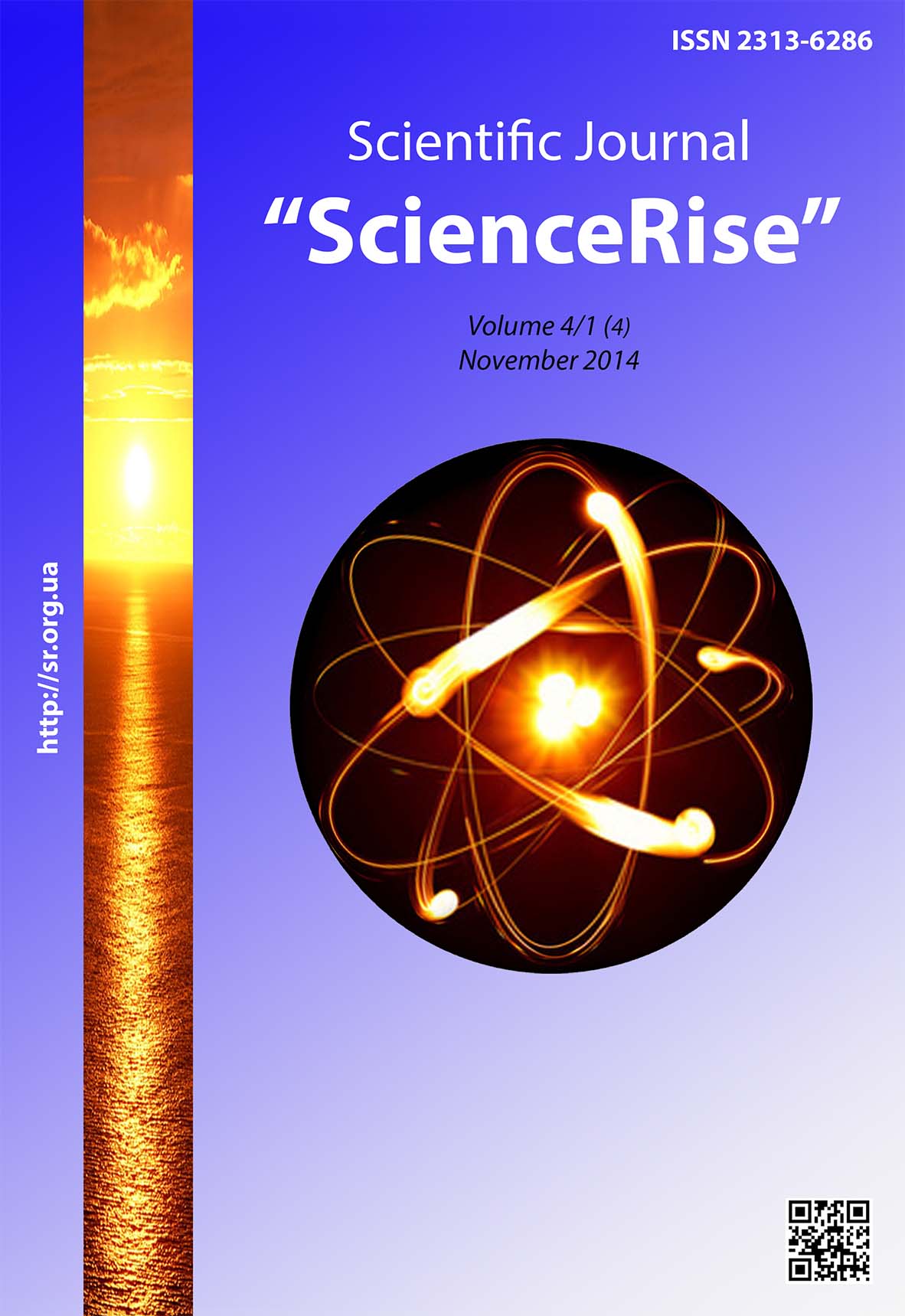Дифференциальная диагностика гестационных отеков
DOI:
https://doi.org/10.15587/2313-8416.2014.28464Słowa kluczowe:
беременность, преэклампсия, гестационные отеки, электропроводимость, дифференциальная диагностикаAbstrakt
Проведены исследования электропроводимости кожи у 155 беременных с гестационными отеками и 50 здоровых беременных, разработанной авторами методикой. Получены достоверные результаты, что электропроводимость кожи зависит от степени её гидратации. Разработаны дифференциально-диагностические критерии прогнозирования развития преэклампсии, а также рекомендации касательно ведения беременных с гестционными отеками, в зависимости от уровня электропроводимости кожи.
Bibliografia
1. Ailamazyan, E. K. (1996).Akusherstvo [Obstetrics]. Spec. lit., 493.
2. Wienckowski, B.M, Gagalowicz, M. V. (1997). Sovremenii principi lechenia pozdnego gestoza [Modern principles of treatment of late gestosis]. Treatment and diagnosis, 1, 42–44.
3. Savelyeva, G. M., Shalin, R. I. (1998). Sovremenii problemi etiologii, patogeneza, terapii i profilaktiki gestozov [Modern problems of etiology, pathogenesis, therapy and prevention of gestosis]. Obstetrics and gynecology, 5, 3–6.
4. Zilber, A. P., Shifman, E. M. (1997). Akusherstvo glazami anesteziologa. Etudi klinichiskoi medicini [Obstetrics eyes anesthesiologist. Studies of clinical medicine]. PSU, 397.
5. Pipkin, B. (1998). Opredelenie preeklampsii – problemi i lovushki [Definition of pre-eclampsia – problems and pitfalls]. Obstetrics and gynecology, 5, 12–13.
6. Potapov, V. A., Khaskhachikh, D. A. (2004). Fizicheskie osnovi primenenia elektromagnitnogo (vikhretokovogo) metoda dly diagnostiki biologicheskikh tkanei v medicine [Physical basis for the application of electromagnetic (eddy-current) method for diagnosis of biological tissues in medicine]. Medicina rehabiltate, balneology, fisioterapia, 1, 24.
7. Enkin, M., Queyras, M., Neilson, D. (2003). Rukovodstvo po effectivnoi pomoshi pri beremennosti i rogdenii rebenka [Guide to effective care in pregnancy and childbirth]. Petrópolis, 430.
8. Sidorova, I. S. (2007). Pozdnii gestos[Late gestosis]. ARKTOS, 224.
9. Dekker, G. A., Sibai, B. M. (1999). Early detection of preeclampsia. Am. J. Obstet. Gynecol, 165 (1), 167–172. doi: 10.1016/0002-9378(91)90245-m
10. Sibai, B. M. (2002). Diagnosis and management of preeclampsia and eclampsia. Am. College Obst, 9 (7), 123–127.
11. Douglas, K. A., Redman, C. W. G. (1994). Eclampsia in the United Kingdom. Brit. Med. J, 309 (6966), 1395–1400. doi: 10.1136/bmj.309.6966.1395
12. Walker, J. J. (2000). Preeclampsia. Lancet, 356, 1260–1265.
13. Horn, M. M., Heitz, U. I., Sweringen, P. L., Veber, K. S. (2000). Vodno-elektrolitnii i kislotno-shelochnoi balans [Water-electrolyte and acid-base balance]. Nevsky Dialect, 320.
14. Shifman, E. M. (2003). Pre-Eclampsia, eclampsia, HELLP syndrome [Pre-Eclampsia, eclampsia, HELLP syndrome]. Inteltek, 432.
15. Khaskhchikh, D. A. (2007). How to determine the prevalence of gestating swelling. The Declaration patent of Ukraine for useful model. А61N 1/00. №28843; declared 30.07.07; published 25.12.2007, № 1.
16. Khaskhchikh, D. A., Potapov, V. A. (2007). The method of differential diagnosis of gestating swelling. The Declaration patent of Ukraine for useful model. А61N 1/40. № 40365; declared 15.09.08; published 10.04.09, № 7.
##submission.downloads##
Opublikowane
Numer
Dział
Licencja
Copyright (c) 2014 Дмитрий Анатольевич Хасхачих, Татьяна Романовна Cтрельцова

Utwór dostępny jest na licencji Creative Commons Uznanie autorstwa 4.0 Międzynarodowe.
Our journal abides by the Creative Commons CC BY copyright rights and permissions for open access journals.
Authors, who are published in this journal, agree to the following conditions:
1. The authors reserve the right to authorship of the work and pass the first publication right of this work to the journal under the terms of a Creative Commons CC BY, which allows others to freely distribute the published research with the obligatory reference to the authors of the original work and the first publication of the work in this journal.
2. The authors have the right to conclude separate supplement agreements that relate to non-exclusive work distribution in the form in which it has been published by the journal (for example, to upload the work to the online storage of the journal or publish it as part of a monograph), provided that the reference to the first publication of the work in this journal is included.

